The Specialized Epic Comp Hardtail is the brand’s cross-country hardtail mountain bike.
In a world where cross-country mountain biking is continually evolving in bike and course design, the Epic has had to morph and evolve to keep up.
To do so, Specialized tweaked the Epic’s geometry and frame in 2020 so it could continue to meet the demands of the latest race courses by increasing comfort while keeping headline weight figures low and speed high.
Specialized Epic Hardtail Comp frame
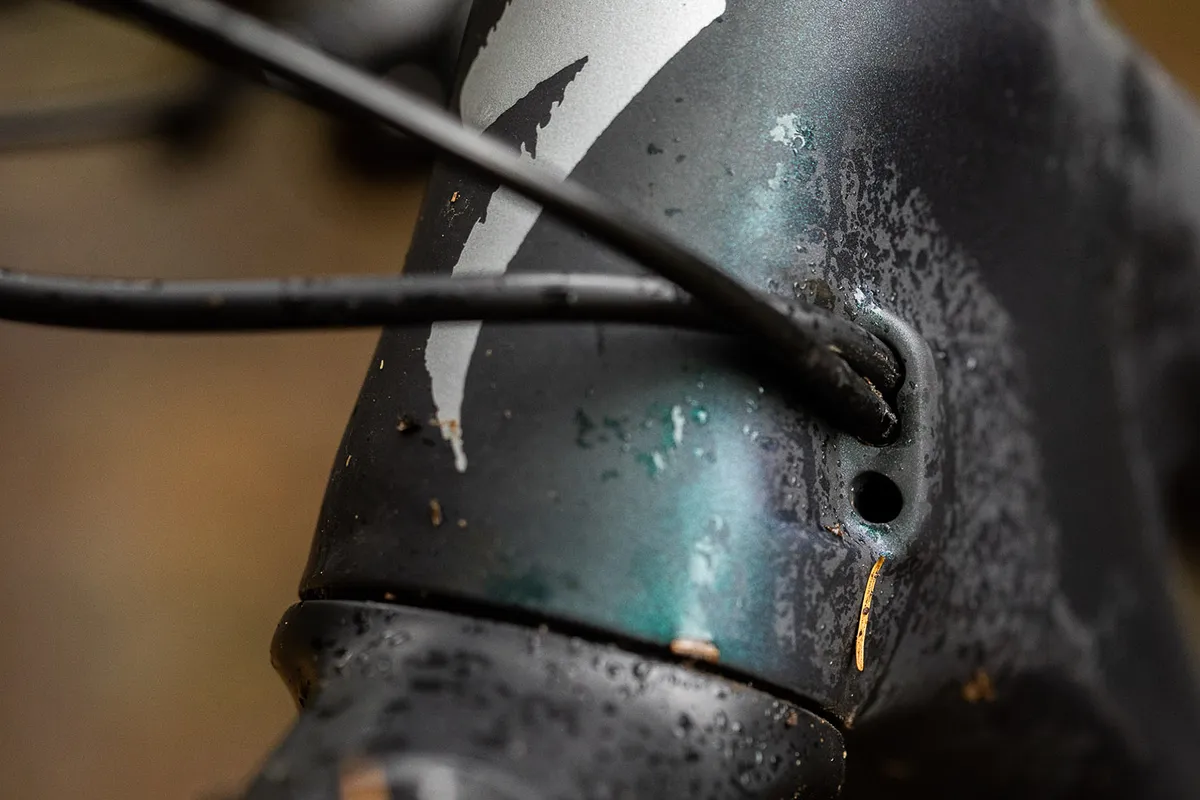
The Epic Hardtail’s frame is built from the brand’s FACT 11M carbon fibre. This high-tech material means the Epic has a claimed frame-only weight of 915g, which contributes to the Epic Comp’s 10.44kg (size small, without pedals) full build weight I’ve tested.
The Comp sits in the middle of the non S-Works range of three Epic Hardtails, all of which share the 11M frame. If you’re in the game of weight saving, the S-Works model could be for you, because its frame shaves a further 115g thanks to its 12M carbon fibre.
Like other Specialized bikes, the Epic is Rider First Engineered. This is the brand’s term used to describe its approach to carbon layup and construction techniques designed to unify how stiff its frames feel across the range of sizes.
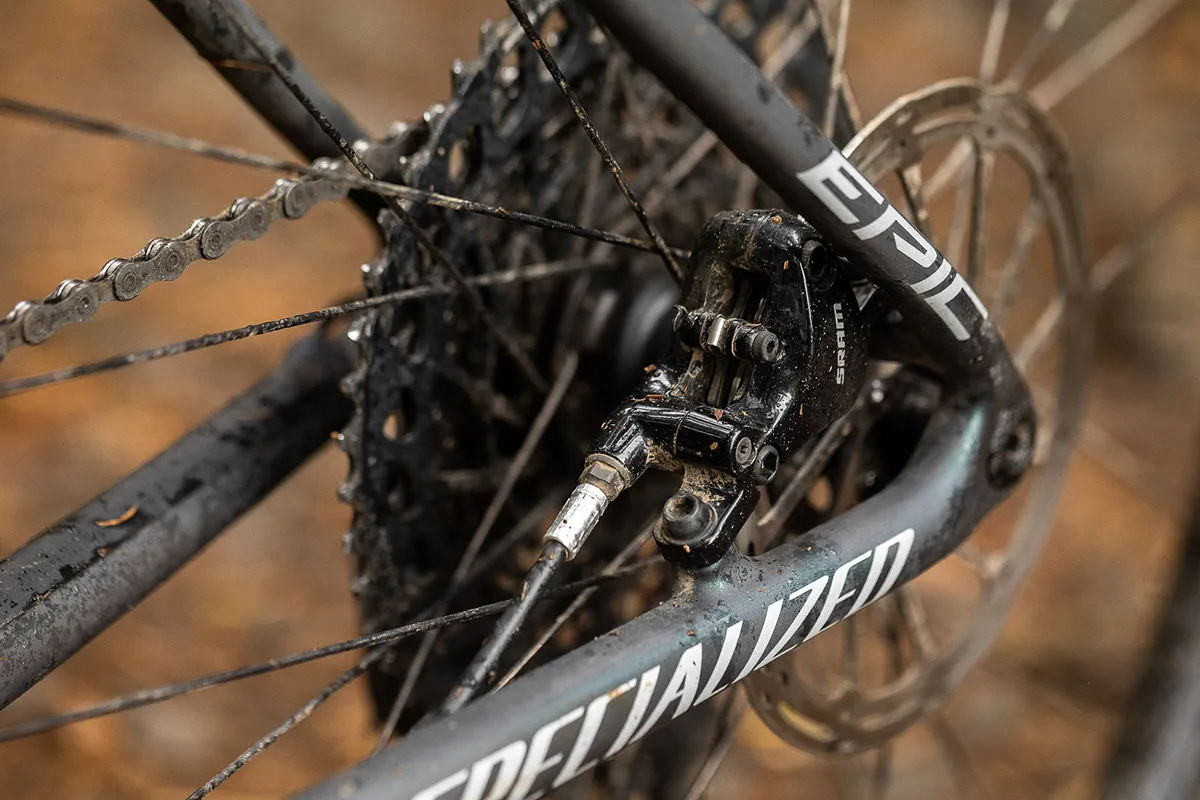
All the Epic models are built around 100mm forks.
There are two bottle boss locations inside the front triangle, one on the seat tube and one on the down tube.
That down tube is fitted with a strip of frame protection on the underside to protect the carbon from rock strikes or damage, a detail that not many brands include.
The rear brake and gear cables are routed internally in cable sleeves to reduce movement and noise. There's a spare port should you wish to fit a hydraulic dropper post or change how your cables are routed.
Specialized Epic Hardtail Comp geometry
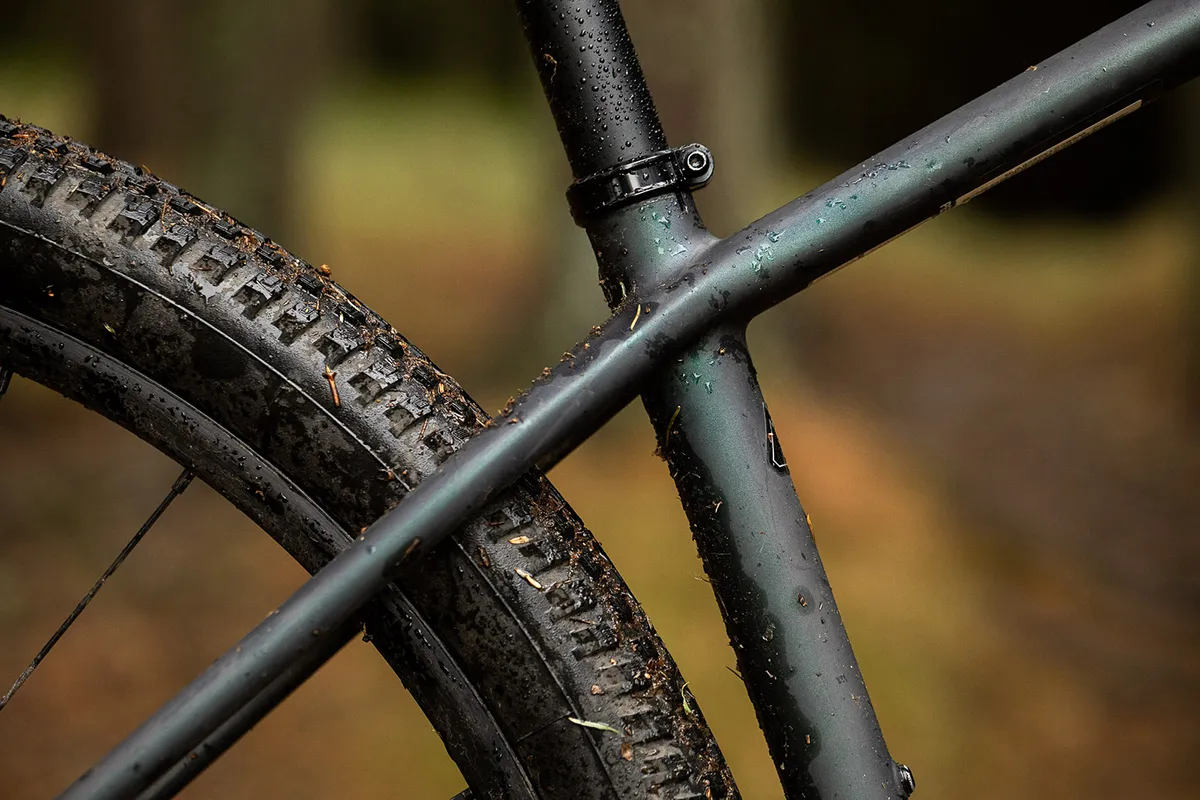
The size-small Epic I tested has longer reach and wheelbase figures of 405mm and 1,090mm respectively. Its 68.5-degree head angle is on-par with many current XC hardtails, as is the 74-degree seat tube angle.
It has a low-slung 309mm bottom bracket height and relatively generous 430mm chainstays.
Although the Epic isn’t breaking new ground in terms of geometry, its figures are well suited to its intended XC-race use.
| | S | M | L | XL |
|---|---|---|---|---|
| Seat angle (degrees) | 74 | 74 | 74 | 74 |
| Head angle (degrees) | 68.5 | 68.5 | 68.5 | 68.5 |
| Chainstay (mm) | 430 | 430 | 430 | 430 |
| Seat tube (mm) | 400 | 430 | 470 | 520 |
| Top tube (mm) | 579 | 604 | 633 | 662 |
| Head tube (mm) | 95 | 95 | 110 | 125 |
| Fork offset (mm) | 42 | 42 | 42 | 42 |
| Trail (mm) | 103 | 103 | 103 | 103 |
| Bottom bracket drop (mm) | 63 | 63 | 63 | 63 |
| Bottom bracket height (mm) | 309 | 309 | 309 | 309 |
| Wheelbase (mm) | 1,090 | 1,115 | 1,146 | 1,176 |
| Standover (mm) | 762 | 792 | 816 | 847 |
| Stack (mm) | 608 | 608 | 622 | 636 |
| Reach (mm) | 405 | 430 | 455 | 480 |
| Crank length (mm) | 170 | 175 | 175 | 175 |
| Stem length (mm) | 60 | 70 | 70 | 70 |
| Seatpost length (mm) | 350 | 400 | 400 | 400 |
Specialized Epic Hardtail Comp specifications
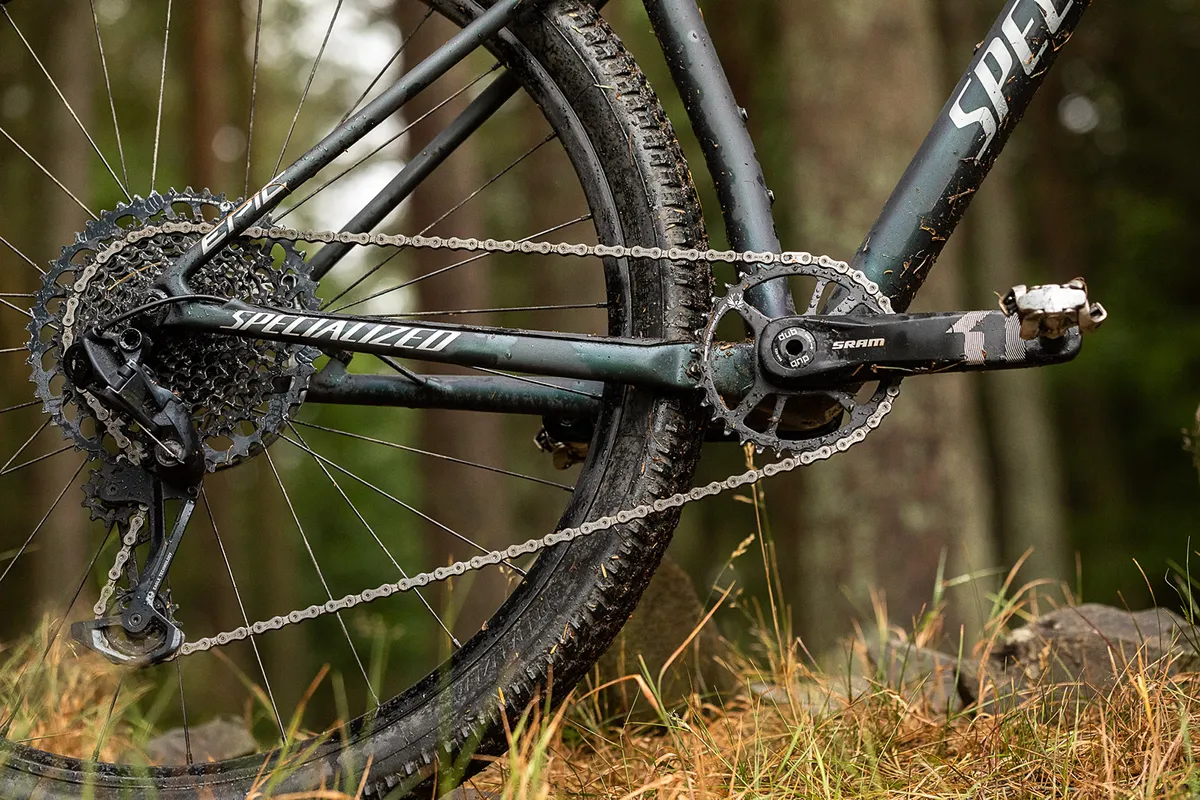
This model of the Epic is fitted with SRAM’s Level TL two-piston brakes with 160mm rotors front and rear, and a SRAM GX Eagle 12-speed cable-operated drivetrain.
The 10-52t cassette on my test bike was paired with a 34t chainring (although this has changed to a 32t ring for all current bikes).
Up-front, there’s a RockShox Reba RL 100mm-travel fork, which uses RockShox’s Motion Control damper and Solo Air spring.
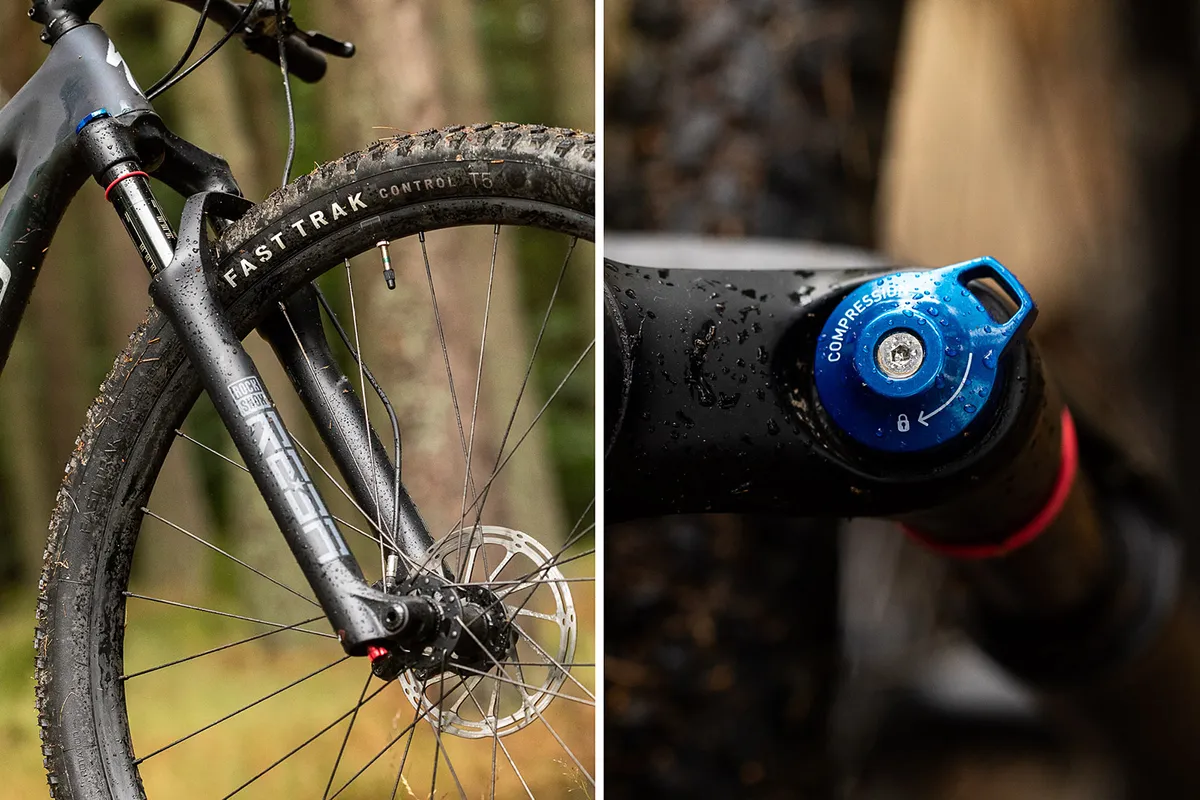
A host of own-brand Specialized parts feature across the bike. These include the 31.8mm clamp diameter handlebars and stem, Body Geometry Power Sport saddle and fixed-position seatpost.
The Specialized rims are laced to unbranded hubs, and the tyres are wrapped in Specialized rubber, with a Fast Trak out front and a Renegade at the back.
Both use the lightweight Control casing and fast-rolling T5 compound.
The size-small Specialized Epic Comp Hardtail weighed 10.44kg without pedals.
Specialized Epic Hardtail Comp ride impressions
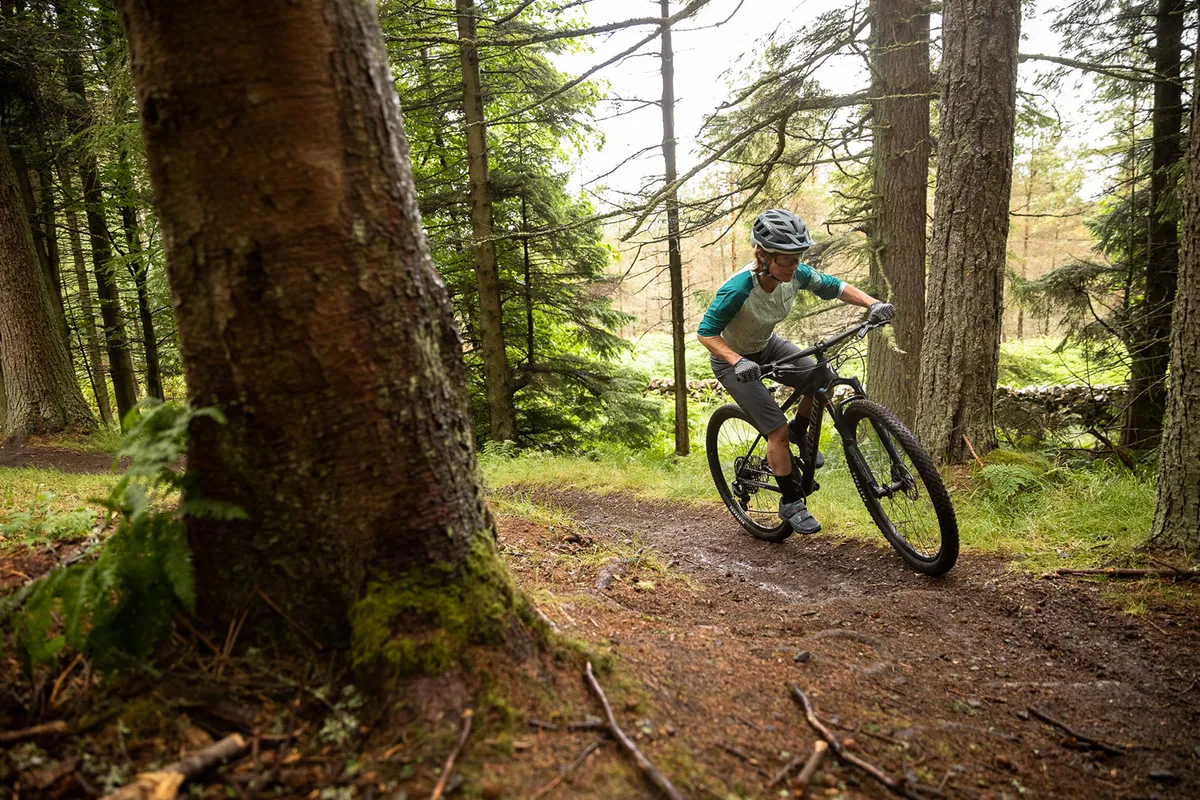
I tested the Epic Comp Hardtail in Scotland’s Tweed Valley, host of the 2023 UCI Mountain Bike Cross-Country and Marathon World Championships.
Although the terrain I rode it on was massively varied – from trail-centre runs through to rugged and wild singletracks in the backcountry – it was representative of the exact conditions and trails this bike is designed to excel on.
Specialized Epic Hardtail Comp climbing performance
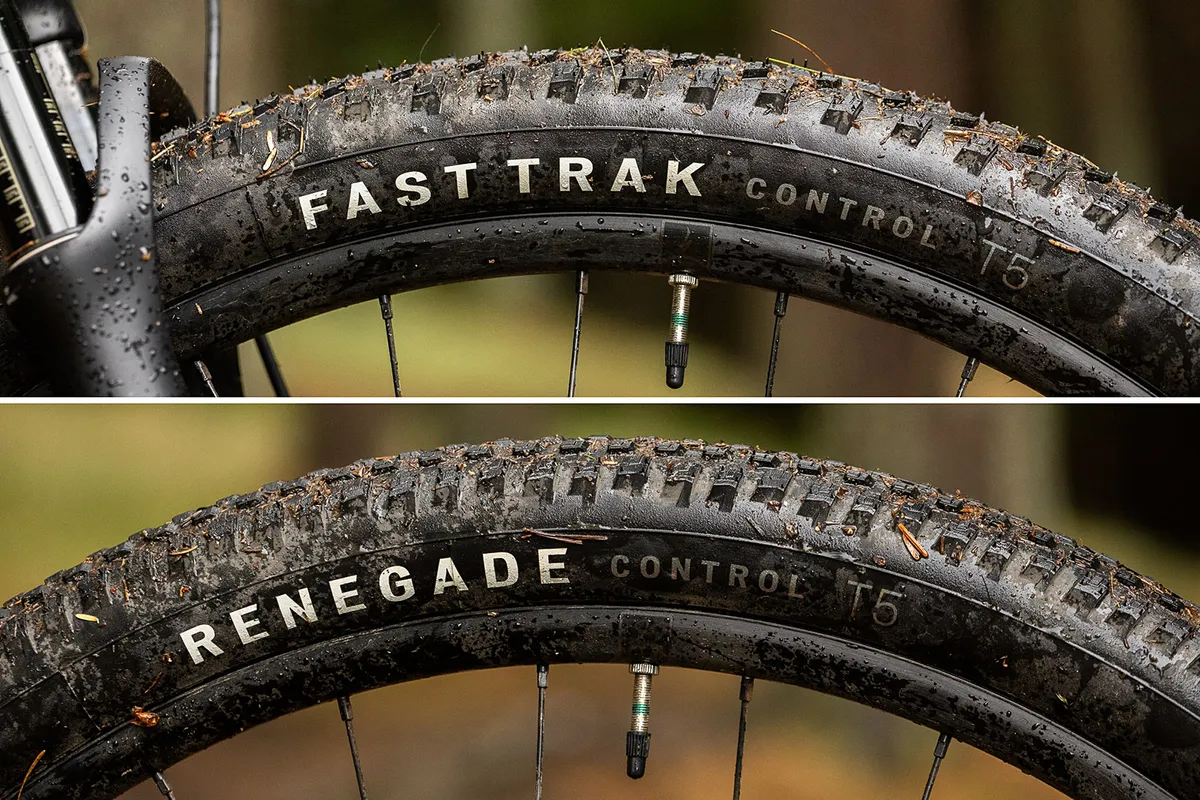
Taking no time at all to feel at home on the Epic, when ridden in isolation I was impressed by how it soaked up the rumble of fire roads and trail-centre climbs.
However, after riding the Epic back-to-back with Cannondale’s Scalpel and recalibrating my expectations of how much trail chatter could or should be absorbed, the Epic felt stiffer than my initial impressions indicated.
On longer rides, this allowed fatigue to creep into my arms and legs from soaking up the chatter the frame transmitted to my body.
Despite that, there was a reassuring robustness to the frame, where pushing or leaning into the trail’s contours was fun, rewarding and accurate.
This gave the bike a fun and whippy nature that put a smile on my face, and helped me to carry speed, with rider inputs rewarded with surges in speed.
Another advantage of the frame’s stiffness was its efficient conversion of leg power to acceleration on most climbs.
Standing up to sprint on punchy, rocky climbs made the rear wheel ping off-line, followed by a slight stalling in the consistency of pedalling.
In contrast, climbing on smooth singletrack was a dream, and the reward of speed and a potential Strava PR encouraged me to push on harder than normal.
The seated body positioning improved comfort and felt spot-on for longer days in the saddle, with weight shared evenly between the saddle and grips.
The SRAM GX Eagle drivetrain shifted efficiently, although some fine tuning was required, and it desperately needed the smaller 32t chainring Specialized now specs.
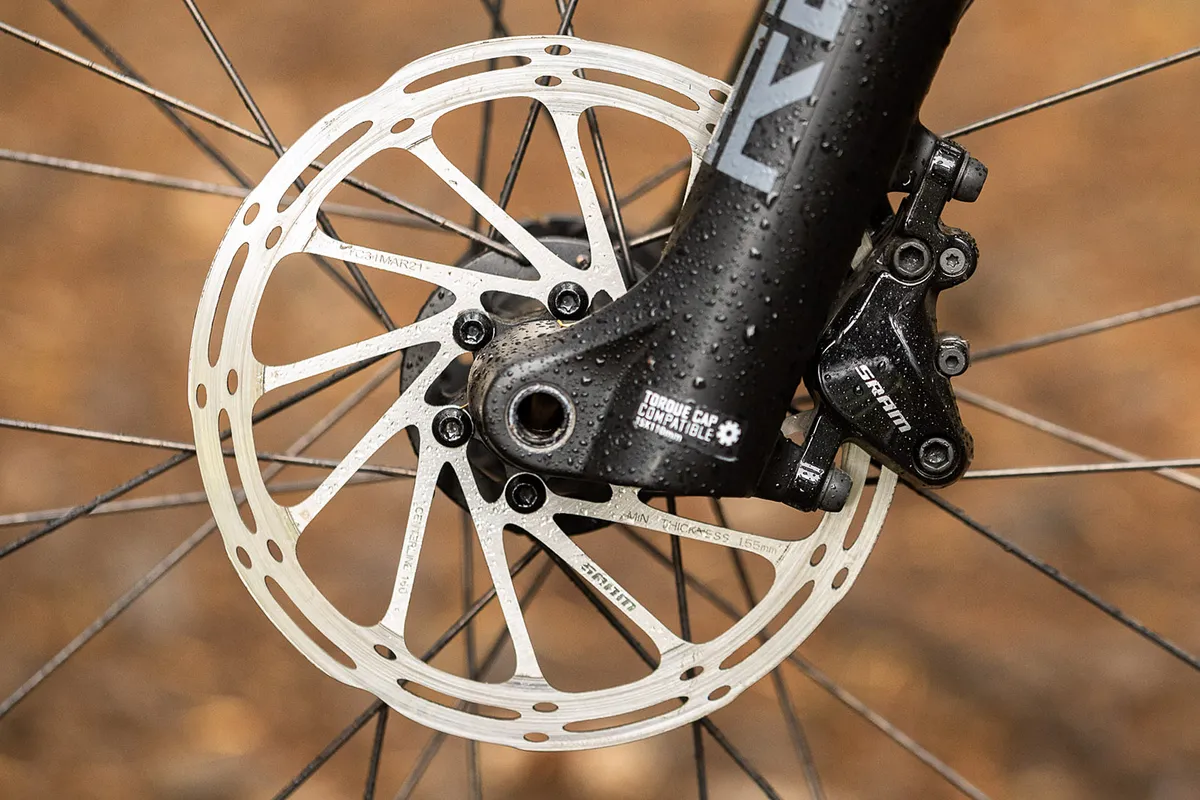
I found SRAM’s Level TL brakes lacked the power and urgency compared to Shimano’s Deore MT501s, which have more power and stronger bite.
The 2.3in-wide Fast Trak and Renegade T5 compound tyres were fast-rolling and grippy in the dry, both helping the Epic feel as though it accelerated quickly and held speed well.
That grip was transferred over to wetter conditions, where I was pleasantly surprised at the amount of traction they had, even on greasy trail-centre surfaces.
Specialized’s own-brand grips and saddle are favourites of mine and performed well, helping mitigate some of the frame’s harshness.
Specialized Epic Hardtail Comp descending performance
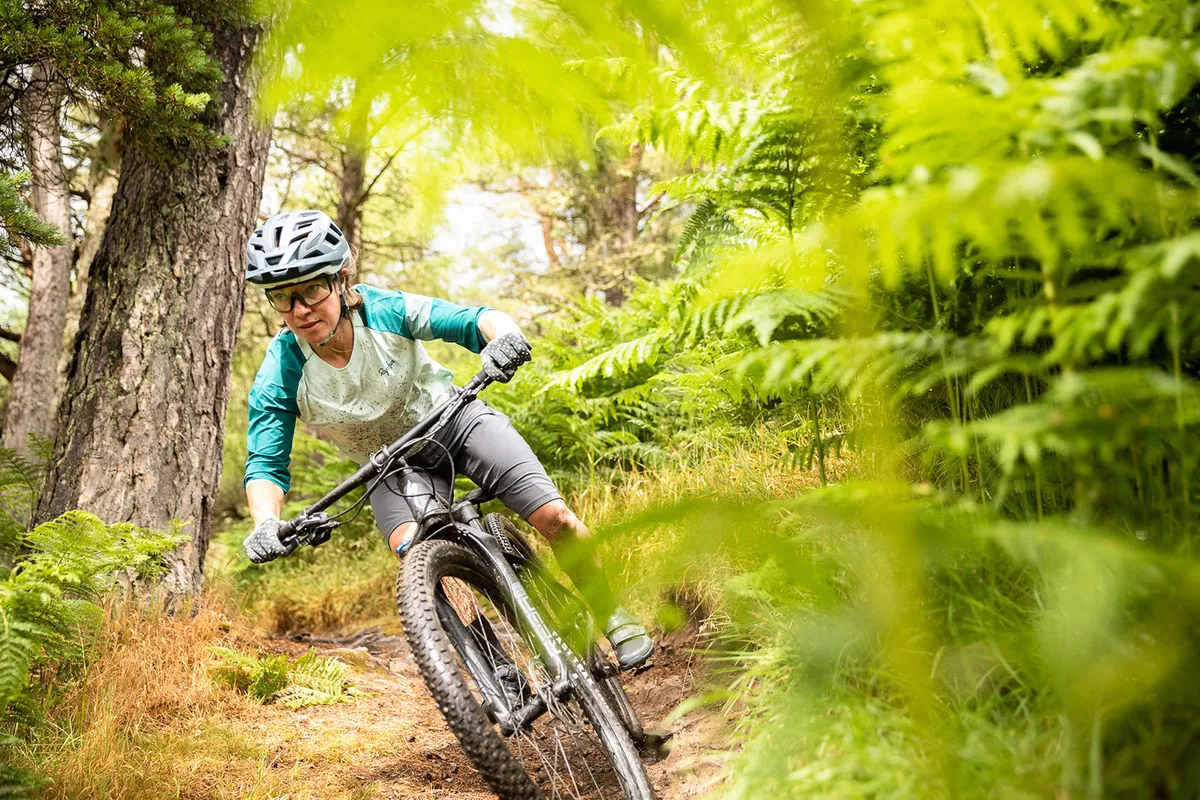
Hitting the descents, the Epic felt sprightly and fun.
The quick and responsive steering was aided by the 60mm stem, and despite the speedy handling it was still capable on steeper, rougher off-piste tracks.
When the terrain got very chunky, I had to make wiser line choices to keep things in check. This gave me more room to manoeuvre over technical terrain and open up tight turns to make them easier.
Despite the snappy handling, the Epic’s overall riding position put me in a comfortable yet aggressive style that would mean business between the tapes.
Once I’d got used to the geometry and I was riding confidently and aggressively, its super-responsive handling made rapid changes of direction by pushing and leaning into the trail addictive and fun.
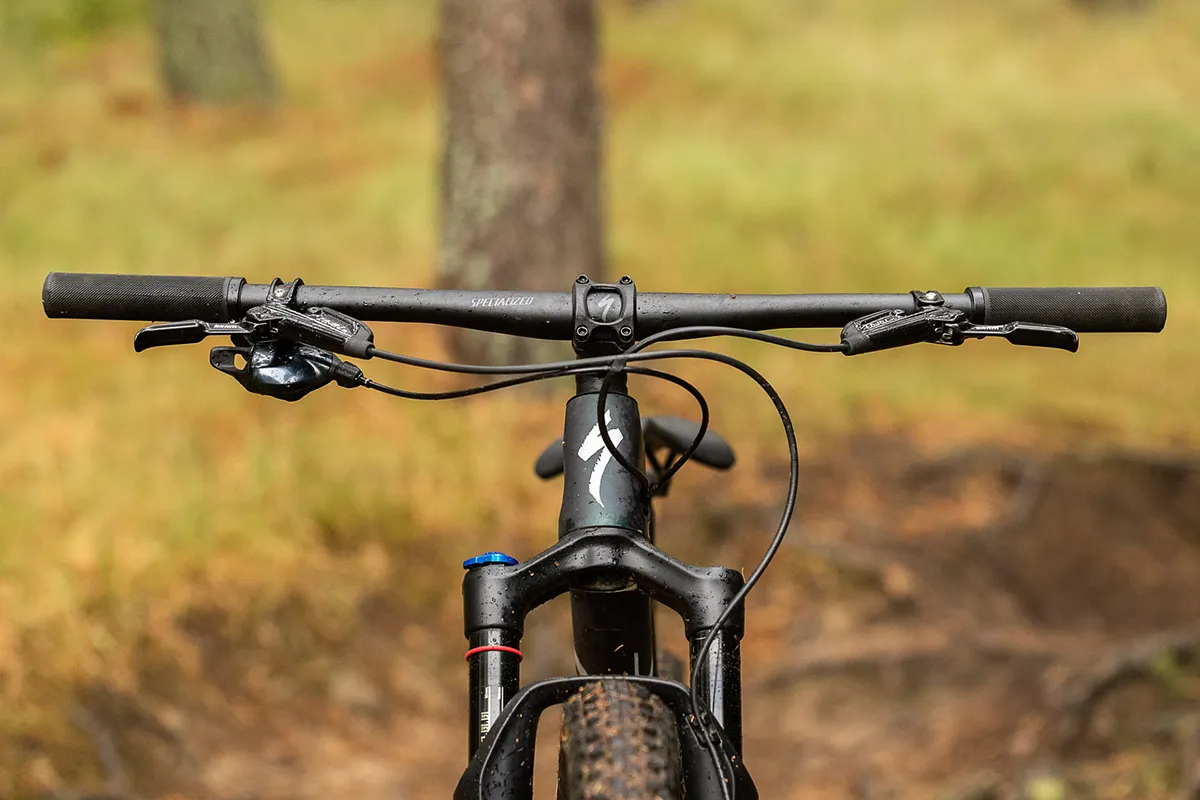
Pushing it further still, I was able to tackle some tamer downhill-specific runs, as long as I had enough energy to absorb the bumps the bike couldn’t.
The RockShox Reba SLs were perfect for smooth, flowy singletrack, but started to reach their limit on rougher, rooty trails. Their damping was unable to keep up with high-frequency, low-amplitude bumps, and they transmitted vibrations through my hands and up my arms.
This meant longer days in the saddle with chunkier, rougher descents or terrain made me fatigue quicker than I would have expected.
For that reason, it suited short rides, high-speed sprint intervals or a fast lap of the forest.
How does the Specialized Epic Hardtail Comp compare to the Cannondale Scalpel and Rockrider MTB Race 900 Team Edition?
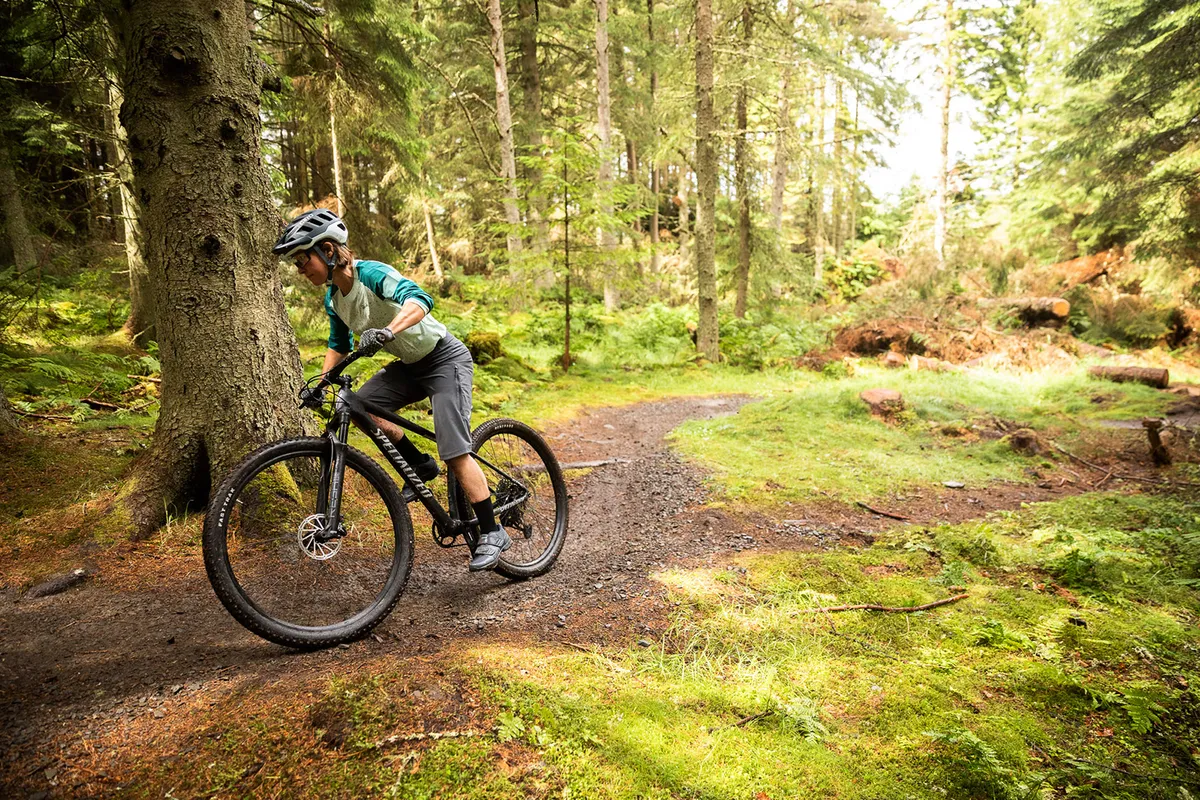
The biggest differences between these three bikes are their value, riding position and how stiff their frames are. Each of these will influence the types of trail you’re able to ride.
In terms of specifications and value, the Rockrider far outstrips both the Specialized and Cannondale. However, the Scalpel is better equipped, with higher-performing parts, than the Epic despite it costing less.
However, out on the trail the Rockrider is uncompromisingly stiff, where riding quickly and efficiently is harder than the softer-feeling but heavier Epic. Once again, though, the Scalpel edges ahead of the Epic, feeling smoother still and punishing the rider less.
If you enjoy hurtling around trail-centre loops on short high-intensity rides, the Epic is a great tool for the job. Although it’s not the smoothest out there, its robust-feeling frame picks up speed quickly and easily, and holds it.
Specialized Epic Hardtail Comp bottom line
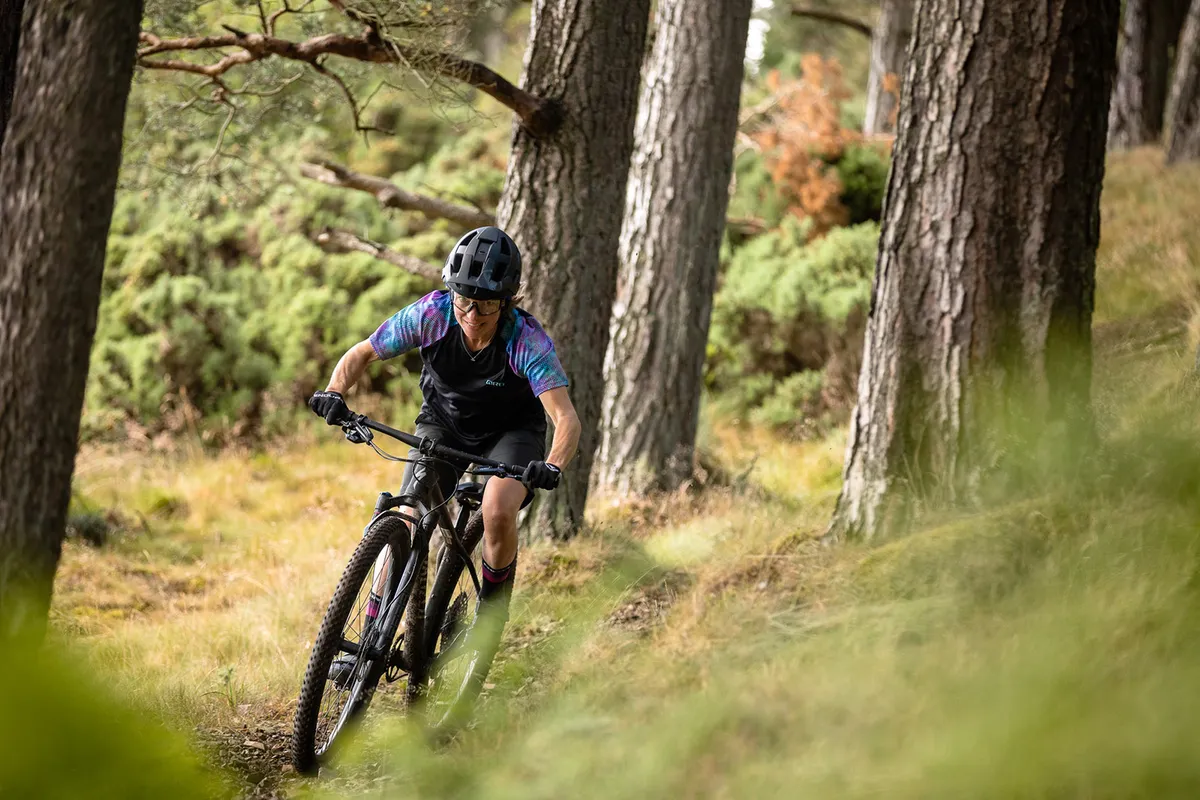
The Epic Comp Hardtail is a stunning-looking bike that's best suited to smoother, mellower trails, but it can handle more challenging terrain if you can hold on.
It’s a fast mover and is fun to ride, but lacks the smoothness for all-day adventures and chunkier terrain when compared to bikes such as the Cannondale Scalpel.
Product
| Brand | specialized |
| Price | 4100.00 GBP |
| Weight | 10.4400, KILOGRAM (S) - without pedals |
Features
| Fork | RockShox Reba SL, 100mm travel |
| br_stem | Specialized alloy |
| br_chain | SRAM NX Eagle, 12-speed |
| br_frame | FACT 11, Carbon fibre |
| Tyres | Specialized Fast Trak Control T5 (f) and Renegade Control T5 (r) 29x2.35in |
| br_brakes | Sram Level LT |
| br_cranks | SRAM X1000 Eagle, DUB, 170/175mm 32T |
| br_saddle | Specialized Body Geometry Power Sport |
| br_wheels | Specialized Alloy laced with DT Swiss Spokes, 25mm internal width |
| br_shifter | SRAM GX, trigger, 12-speed |
| br_cassette | Sram XG-1275, 12-speed, 10-52t |
| br_seatpost | Specialized alloy |
| br_handlebar | Specialized alloy, 750mm |
| br_bottomBracket | SRAM DUB, BSA 73mm, Threaded |
| br_availableSizes | S, M, L, XL |
| br_rearDerailleur | SRAM GX Eagle, 12-speed |
